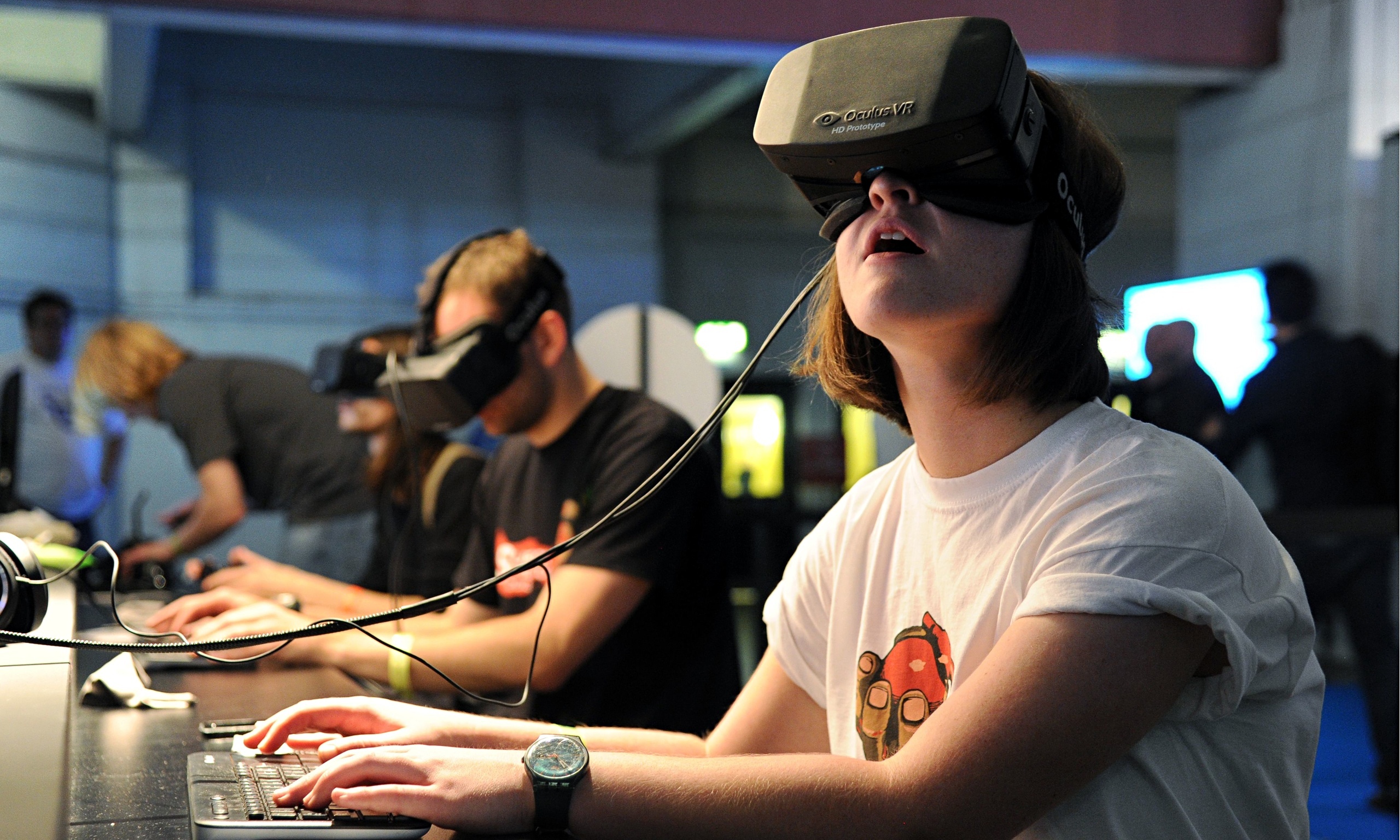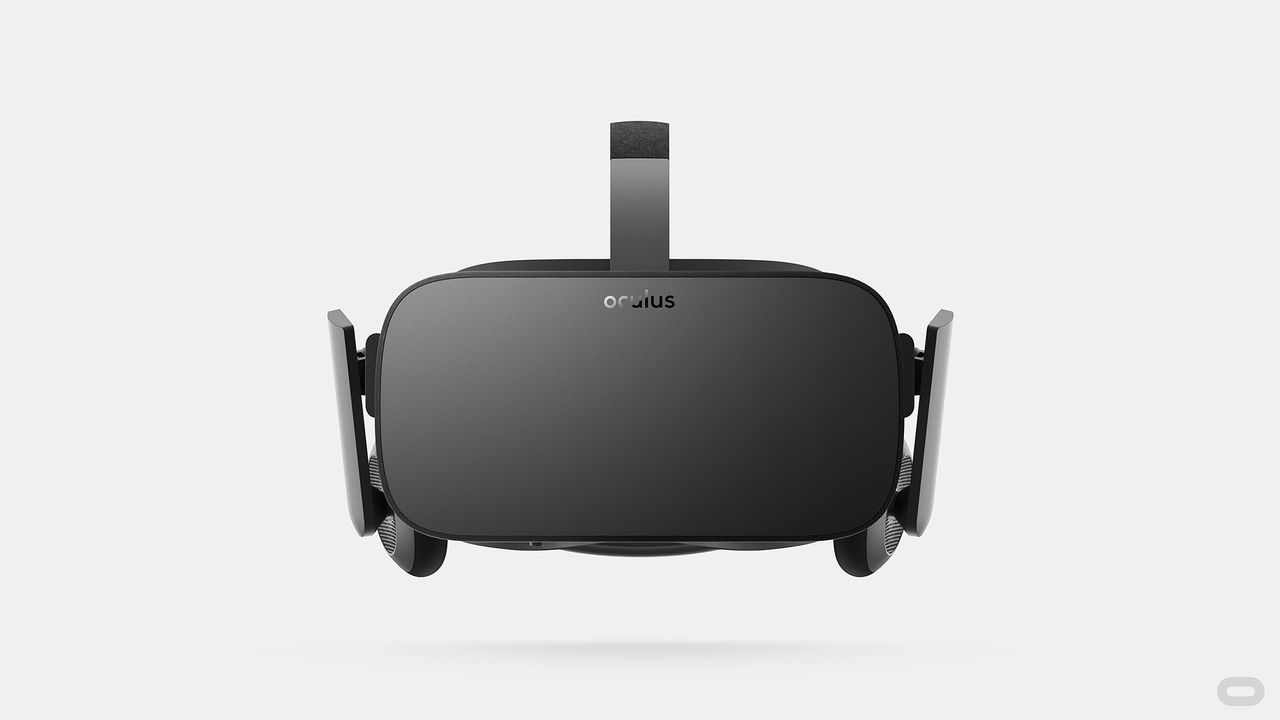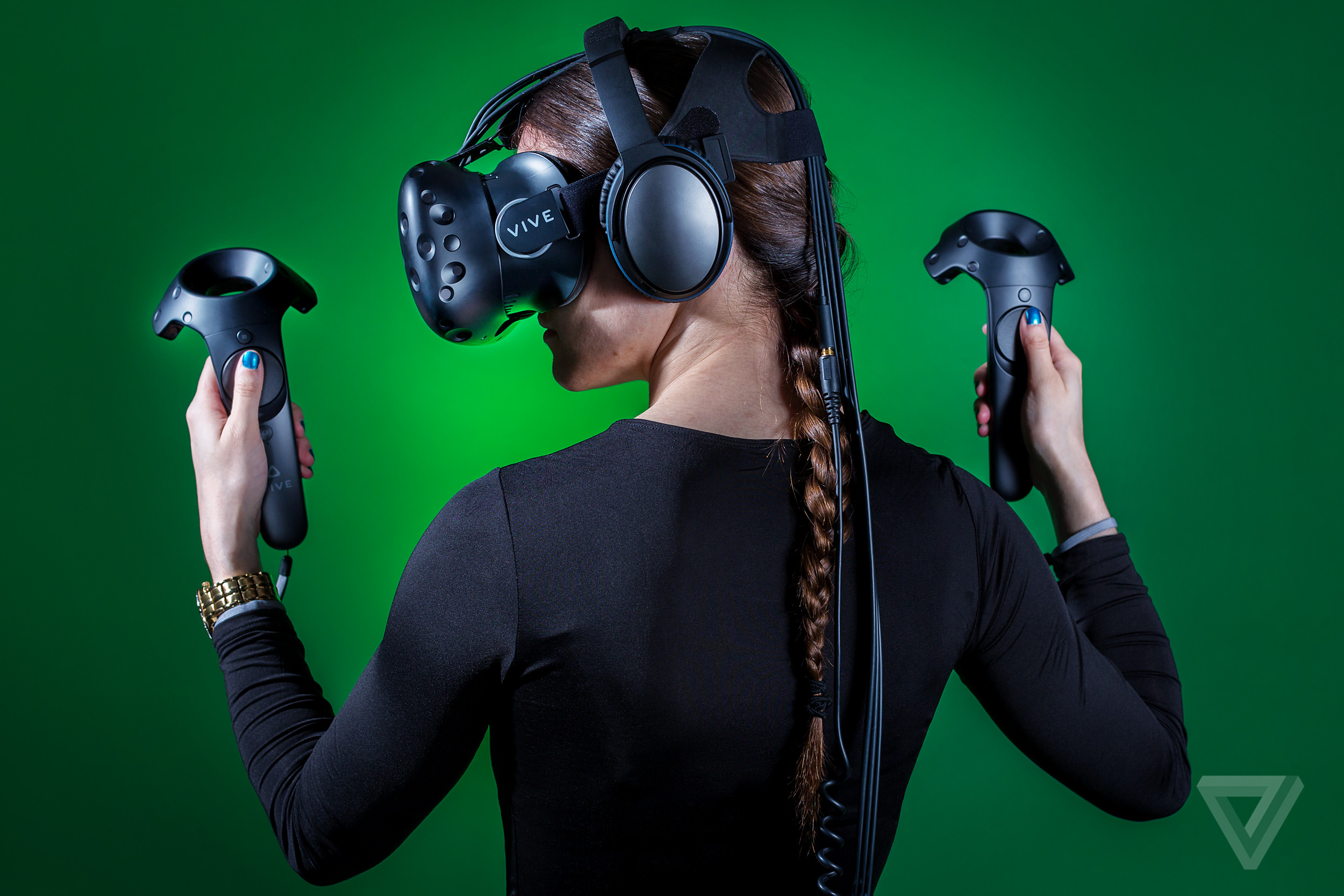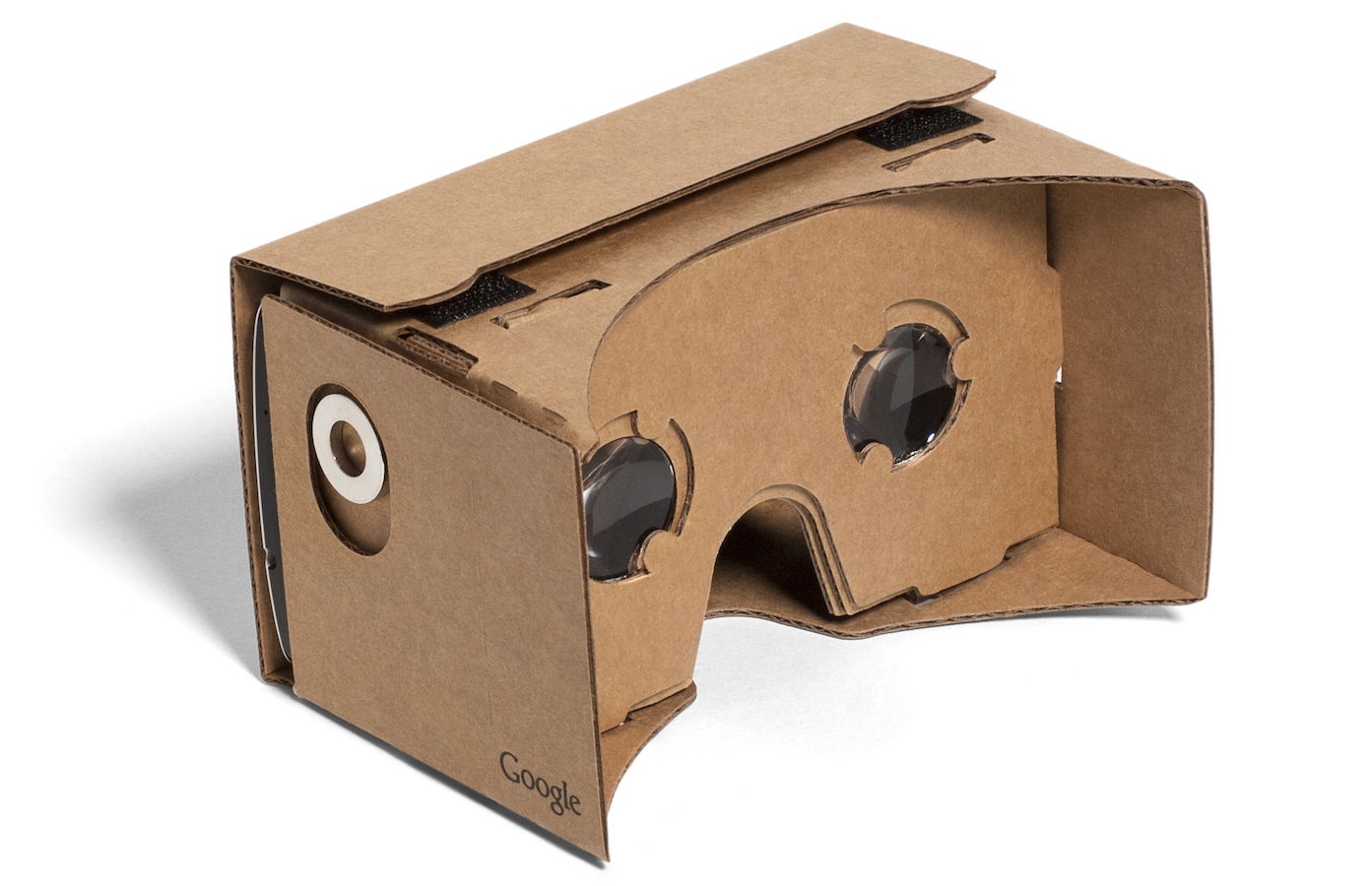Virtual and Augmented Reality – What is it?
By Lach Howarth
Featured Image: An Oculus Rift virtual reality headset in use. (SOURCE)
Virtual reality and augmented reality are two fields of technology that are booming at the moment, but what’s the difference between the two? The difference is actually pretty simple, virtual reality is computer technology that generates an environment, either fictional or real, that allows the user to feel like they are present in the virtual world and able to interact with it. Augmented reality makes use of the physical world which is then modified or supplemented by computer technology. Many new games and gaming technologies are taking advantage of the immersive power of virtual and augmented reality to take the experience they offer to a whole new level. Here’s a few interesting examples of how the new technology is being implemented right now!
VIRTUAL REALITY
Oculus Rift
The Oculus Rift is a virtual reality headset being developed by Oculus VR, a company based in the San Francisco Bay area of California in the United States. Only a matter of months after Oculus VR was formed in June 2012, they launched a Kickstarter campaign to aid the development of the Oculus Rift. They managed to secure the USD$250,000 they were looking for in less than a day and a half and ended up raising almost USD$2.5 million. In 2014 Facebook purchased Oculus VR for USD$2 billion, proving the venture to be incredibly popular! Oculus VR have released two development kits for the Oculus Rift known as the DK1 and the DK2 and the final release happened on the 28th of March, this year. The Oculus Rift retails for USD$599.99.
HTC Vive
The HTC Vive is the major competitor for the Oculus Rift in the world of virtual reality headsets. A joint venture between popular phone manufacturer, HTC, and long running video game developer, Valve Corporation, the HTC Vive consists of three major components; a virtual reality headset and two hand controllers. The hand controllers have really brought the HTC Vive to prominence and caused Oculus VR to begin developing their own version, to be sold separately and released later this year. The HTC Vive was only just behind the Oculus Rift in release date, coming out on the 5th of April this year, only 8 days after the Oculus Rift. The HTC Vive retails for USD$899.00.
Google Cardboard
Google Cardboard is a virtual reality headset perfect for those not so keen on an almost $1000 price tag. Created by Google, as the name would suggest, Google Cardboard is made up of two lenses inside a cardboard housing, no electronics, no screen, no frills. It works by placing any Android phone running 4.1 Jelly Bean or newer inside the cardboard housing and running the Google Cardboard app, which is free. The Google Cardboard allows users to experience 3D environments using only cheap materials and their phone. There is also another free app called Google Cardboard Camera which allows you to take 360-degree photographs and view them in 3D. Along with a range of other free apps, including a roller coaster simulator, dinosaur tour, zombie defence game, hang gliding simulator and more, the Google Cardboard is a great introduction to the world of Virtual Reality, especially with a price tag of just USD$15.
AUGMENTED REALITY
Google Glass
Google Glass, designed by X (formerly Google X), the research and development facility created by google, is a head mounted augmented reality display. Google Glass works much like a heads-up-display (HUD), showing information overlaid on top of the real world. Google Glass is intended to be used much in the way that a mobile phone is used, but rather than requiring the user to look at a screen, the Google Glass will display notifications on a glass screen in front of the users eye. The Google Glass is also voice controlled allowing users to access features and applications without the need to touch anything, for example, a photo can be taken by simply saying “capture”. Another fantastic feature of the Google Glass is it’s navigation technology which will provide live directions visible over what you are looking at. Despite all of the amazing features packed in to the Google Glass, it was a massive flop. A combination of issues including privacy issues, it’s questionable fashion, potential health risks and a hefty price tag (coming in at USD$1,500) caused Google to pull the Google Glass in 2015, just two years after it was released. I’m sure with the rapid pace of technological development it won’t be long before augmented reality glasses are commonplace.
Niantic
Niantic, Inc. is a software development company that focuses on the development of augmented reality mobile games. Two notable games developed by Niantic are Ingress and Pokemon Go, which is being developed in partnership with Nintendo. Both Ingress and Pokemon Go feature gameplay that involves interacting with the environment around you through a mobile app. Ingress is a game of two warring factions competing for control of portals that allow it’s owners to take control of a portion of the globe when multiple are connected together. Pokemon Go, based on the original Nintendo Pokemon series, allows users to catch, train, evolve and battle Pokemon. The local environment determines what type of Pokemon are available to catch. For example, you will find more water type Pokemon near the ocean, lakes and rivers, and you will find more rock Pokemon in mountainous regions.
Ingress was made available for Android in 2012 and iOS in 2014 and is still available, Pokemon Go is set for release this year, with an exact date still yet to be confirmed. It is currently open for closed beta testing in Australia, as well as other select countries, but only for select users who have signed up on their website.






